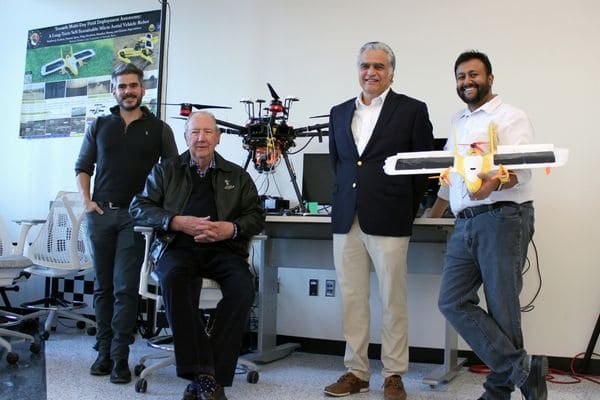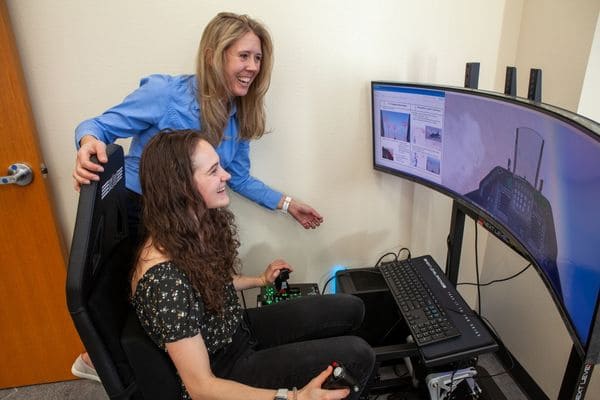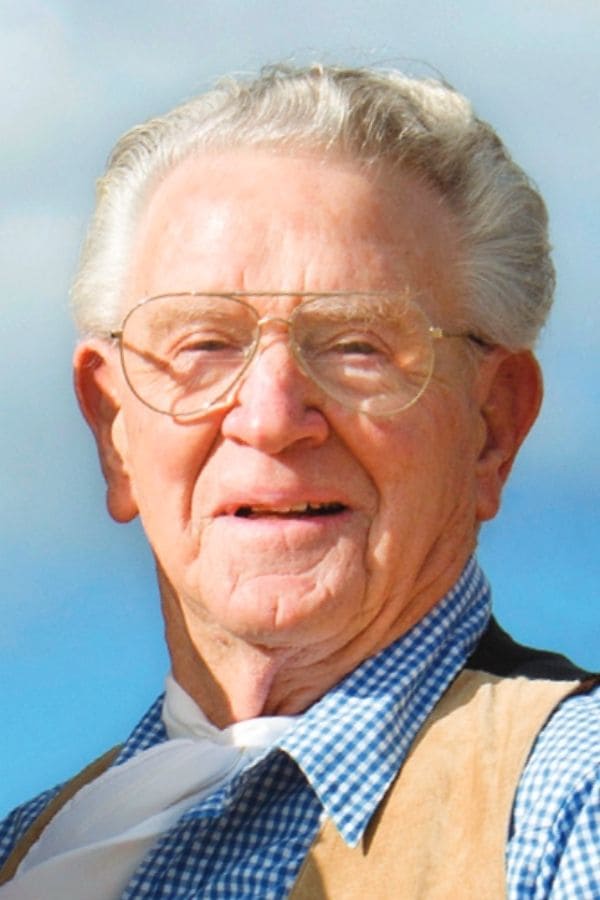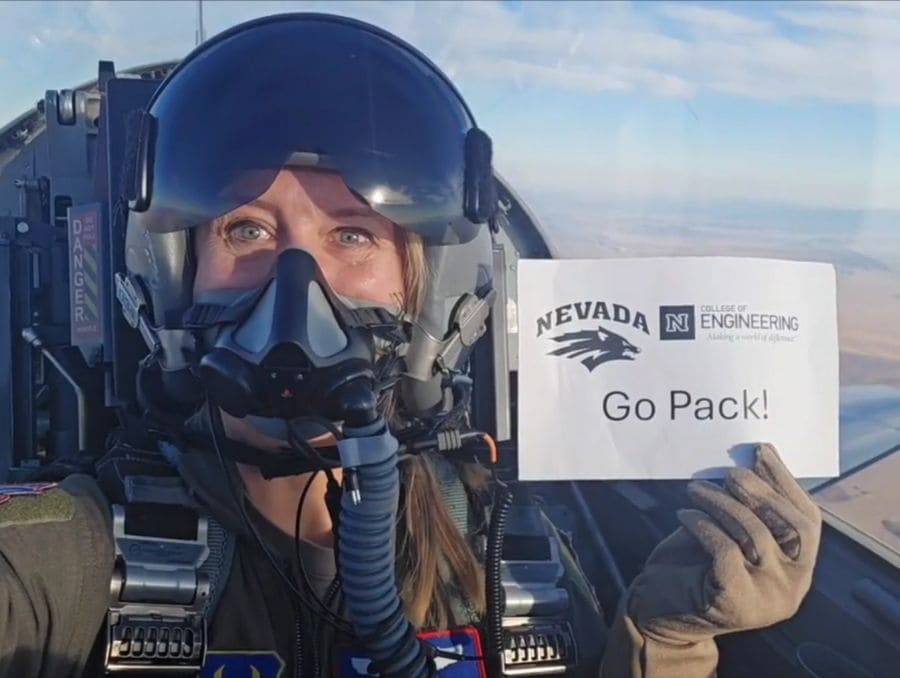A generation of dreamers, engineers and pilots is being fueled by the College of Engineering with the launch of new aerospace engineering bachelor’s and graduate degrees.
Jessica Peterson — a test flight engineer at Edwards Air Force Base in Southern California — is one of those dreamers. Peterson’s work on aviation safety began years ago, when she was part of a team that developed the U.S. Air Force Automatic Ground Collision Avoidance System (Auto-GCAS). Peterson’s role was in designing the test procedures used to validate the system.
Since its deployment in 2014, Auto-GCAS has saved 12 pilots, including a student pilot whom Peterson met personally. Mid-flight while pulling 8.3 Gs, the pilot backed out, his aircraft plummeting thousands of feet. Then, the Auto-GCAS activated, pulling up the plane and saving his life.
From the skies to Nevada
Meeting the pilot whose life she helped save inspired Peterson to return to school in pursuit of developing new life-saving technologies. In 2023, she enrolled in a Ph.D. program in mechanical engineering at the University of Nevada, Reno.
A big draw to the University was Professor Petros Voulgaris, who holds the University’s Victor LaMar Lockhart Professorship in Aeronautical Engineering and started the aerospace program in 2020. Peterson already knew Voulgaris through her work as a test flight engineer. She was also personally connected to the campus through her father, Stan Ulvin, who earned his mechanical engineering degree from the University in 1974.

The college of Engineering’s aerospace program began to take root with the launch of an aerospace minor in 2021. In 2023 — thanks to a transformative gift from the George W. Gillemot Foundation — a plan for an expansion was set in motion. With the start of the school year in August, the George W. Gillemot Aerospace Engineering program began offering both undergraduate and graduate degrees in aerospace.
“This program addresses the growing demand for aerospace professionals and capitalizes on the state’s strategic advantages,” Voulgaris said.
From Nevada to the skies
With real-world experience and a passion for inspiring the next generation of engineers, Peterson, who plans to complete her Ph.D. in spring 2026, helped shape the program to open doors for students like Katelyn Rovig.
A mechanical engineering major with an interest in aerospace, Rovig was originally studying out of state. When circumstances landed her back home in Nevada, the College of Engineering’s new program allowed her to stay on track.

“I wouldn’t have had that opportunity without the aerospace program at the University,” she said.
With mentoring from Peterson, Rovig secured an internship in adaptive control systems at the University of Illinois at Urbana-Champaign, where Voulgaris maintains research partnerships.
“For students, if they get that aerospace engineering degree, there’s a lot of career opportunities within the Western region,” Peterson said. “I think it’s really awesome to see the community excitement and the student excitement about [the program]. It really is an exciting time.
Nevada’s aerospace momentum
The late George W. Gillemot ’00 (honorary doctor of humane letters) dreamed of a school of aviation and aerospace at the University. Thanks to a historic $36 million gift from the George W. Gillemot Foundation, that dream is becoming reality.

In 2003, Gillemot wrote: “The space frontier will be probed for years to come, requiring qualified engineers and well-educated space personnel. Who will train them? Where will production factories be located? Why not here in northern Nevada?” Twenty-two years later, his vision has taken flight. This fall, 20 students enrolled in the new George W. Gillemot Aerospace Engineering program, with 62 more declaring it as a minor.
2011
The Brookings Institution releases an economic development report, commissioned by the State of Nevada, identifying aerospace and defense as one of seven growth industries.
2013
The Federal Aviation Administration (FAA) designates Nevada as a test site for Unmanned Aircraft Systems (UAS) — one of just seven sites in the country. Drones, which fall in the aerospace sector, are tested here to gather research data in aerodynamics, propulsion systems, navigation and more.
2018
A gift from Victor LaMar Lockhart creates the Victor LaMar Lockhart Professorship in Aeronautical Engineering.
2020
Petros Voulgaris is named to the Victor LaMar Lockhart Professorship in Aeronautical Engineering and joins the University to build the aerospace program.
2021
Aerospace Club starts at the University, with Assistant Professor of Aerospace Engineering Aditya Nair as faculty advisor. Aerospace minor is established.
2022
Under the Nevada Autonomous collaborative, the University starts managing the UAS test site, previously operated by the Nevada Governor’s Office of Economic Development.
2023
George W. Gillemot Foundation gifts $36 million to the University, in part to establish the George W. Gillemot Aerospace Engineering program within the College of Engineering.
2024
FAA grants the Nevada UAS Test Site a waiver allowing researchers and industries to operate larger drones beyond the visual line of site of the remote pilot. According to University Vice President for Research and Innovation Mridul Gautam, the waiver will open new opportunities for aviation companies and reduce the production time for new technologies.
2025
Aerospace undergraduate and graduate degree programs launch.
